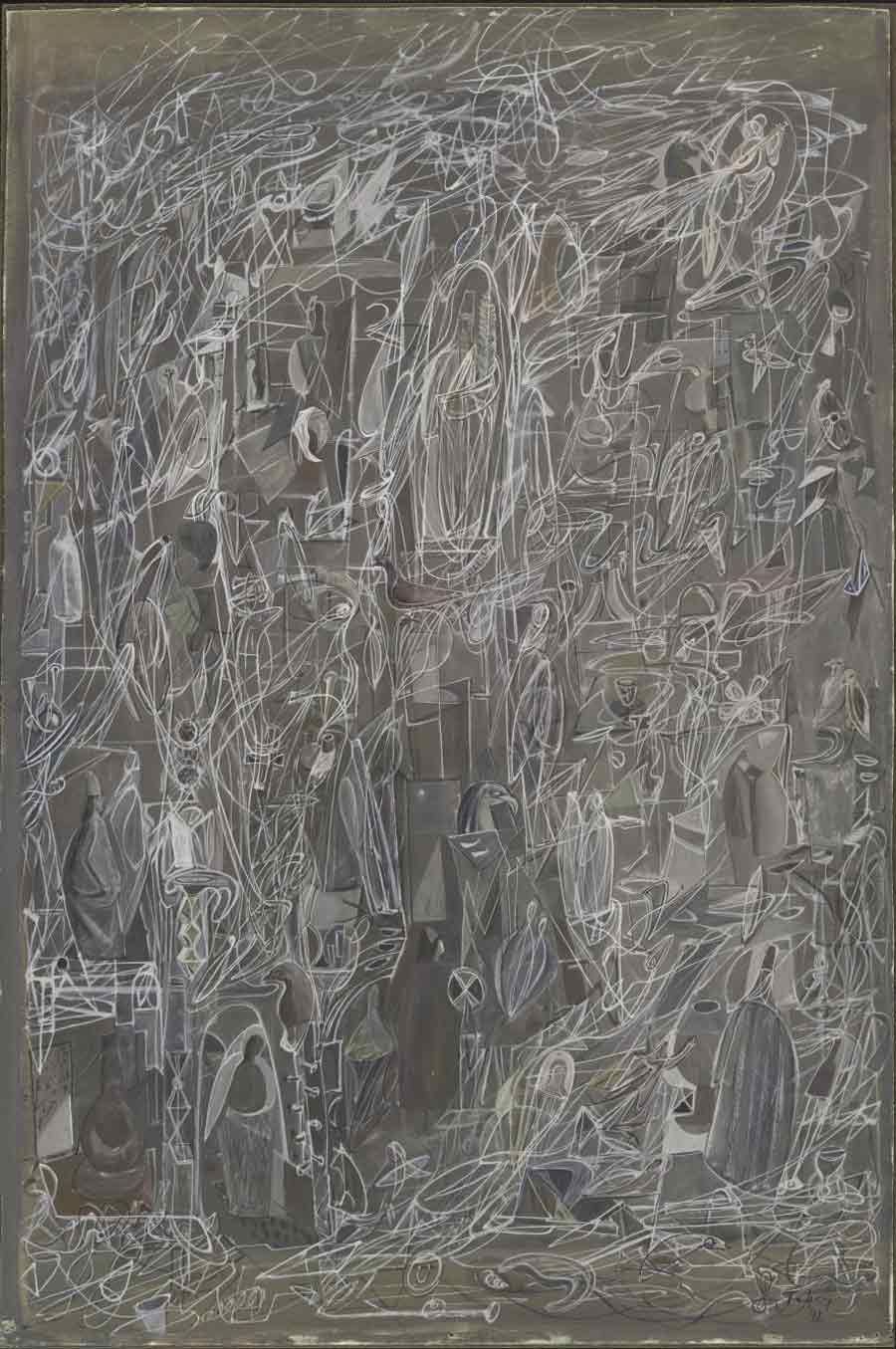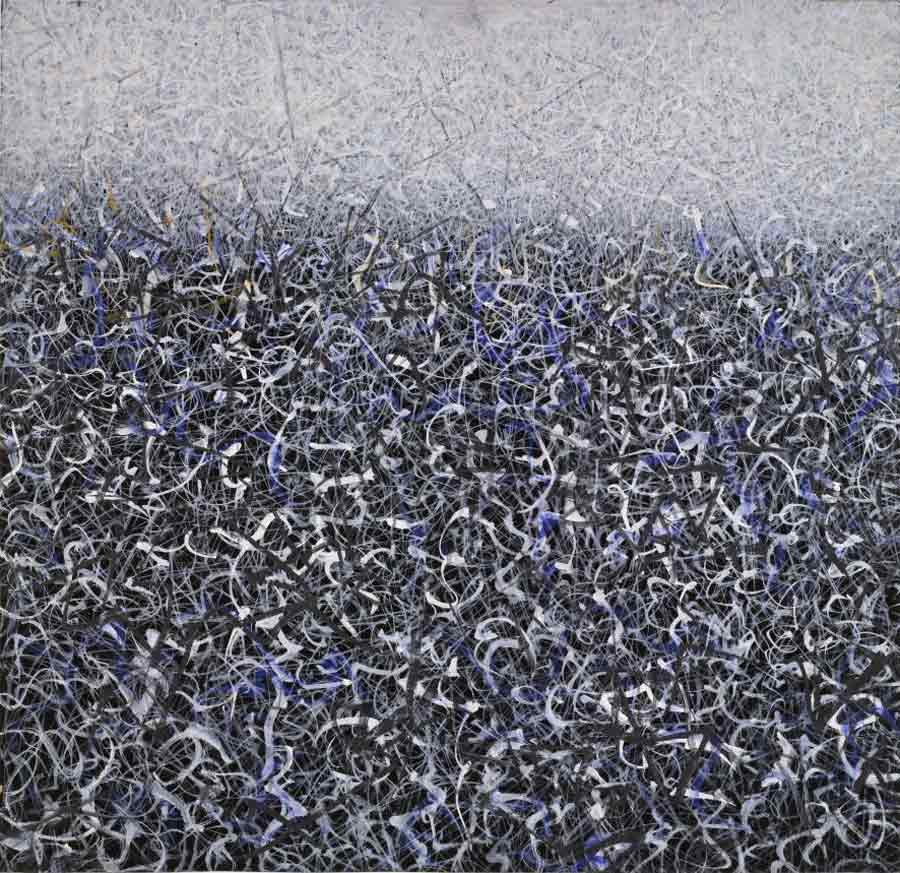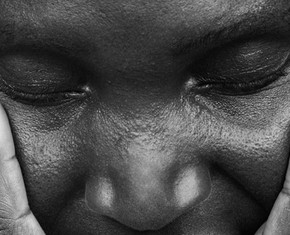As thousands of art lovers from all around the world flock to Venice over the coming months for its famous Biennale art exhibition, one of the city’s major museums hopes to re-establish an American painter as a significant figure in the development of modern art.

Luce filante by Mark Tobey
The Peggy Guggenheim Collection, situated on the south bank of Venice’s Grand Canal, is honoring Mark Tobey (1890-1976), who became a member of the Baha’i Faith in 1918. Born in Wisconsin, Tobey was one of the twentieth century’s most cosmopolitan artists. An inveterate traveler—he eventually settled in Switzerland—Tobey was always better known in Europe than in his homeland, his importance overshadowed by his younger American counterparts from the Abstract Expressionist school, notably Jackson Pollock, whose large-scale canvases of poured and dripped paint revolutionized art in the 1950s.
Yet, as this exhibition demonstrates, the time has come to re-evaluate Tobey’s influence on the development of so-called ‘all-over abstraction.’ Curator Deborah Bricker Balkan has spent ten years bringing some 70 works together, from 40 different collections, and is captivated by Tobey’s painting.
“I continue to be sustained just by the astonishing beauty of this work,” said Ms. Bricker Balkan. “Tobey’s ‘white writing’ is luminous, it is metaphysical and is also elegiac … It draws on his own interior life in a way that we don’t see with many of the artists with whom he is grouped.”
Tobey, whose mature ‘white writing’ works are made up of pulsing webs of lines inspired by oriental calligraphy, explicitly acknowledged the direct influence of the Baha’i Faith on his painting. William Seitz, curator of the Museum of Modern Art in New York City in the 1960s, wrote that Tobey “made line the symbol of spiritual illumination, human communication and migration, natural form and process, and movement between levels of consciousness.”
“He has often stated,” explained Seitz, “that there can be no break between nature, art, science, religion, and personal life … Few religions have given the concept of oneness such pointed emphasis, and few modern artists have dealt with it as explicitly as has Tobey.”
Tobey Won High Distinctions for his Painting
Towards the end of his life, Tobey was the recipient of some of the highest distinctions that the European art scene could bestow. He won the gold medal at the Venice Biennale in 1958—the first American painter to do so since 1895. In 1961, a major retrospective of his work was held at the Louvre in Paris, an unprecedented achievement for a living American artist.
But while Pollock and his New York-based contemporaries have long been given a prominent place in the history books, Tobey’s influence on, and contribution to, the radical development in American abstract painting mid-century has been under-recognized.
It is perhaps partly because of the small scale, the range, and the spirituality and delicacy of Tobey’s works—as well as his particularly personal approach, outside of any movement or ‘school’—that resulted in his being almost completely sidelined from the story of modern art. Yet his influence on painters like Pollack and others is known to have been significant.
With paintings spanning the 1920s through to 1970, the Guggenheim exhibition surveys the breadth of Tobey’s work and reveals its extraordinarily nuanced yet radical beauty. A restless experimenter, Tobey was never satisfied with just one approach to picture making, saying, “At a time when experimentation expresses itself in all forms of life, search becomes the only valid expression of the spirit.”
Art as Worship

Campo selvatico by Mark Tobey
In the Baha’i Faith, art is regarded as worship. “The more thou strivest to perfect it, the closer wilt thou come to God,” wrote Abdu’l-Baha to the American portrait painter Juliet Thompson, who first introduced Mark Tobey to the Baha’i Faith. “That is to say, when thy fingers grasp the paintbrush, it is as if thou wert at prayer in the temple.”
Deborah Bricker Balkan believes that the Baha’i teachings clearly impacted Tobey’s work.
“I think that it is one of the features of his subject matter,” she said. “His pictorial inventions and experimentations are linked with his deep faith actually, elaborating on his inner or spiritual life.”
Being a Baha’i gave Tobey’s work its spiritual context and content, as well as the freedom to find his own pictorial language to express it. Principles, such as the independent investigation of truth, are reflected in the evolutionary development of his paintings on display at the Guggenheim, and through the explicitly spiritual concepts he sought to express. His acceptance of the Baha’i teachings challenged him to see oneness as the fundamental principle governing human interactions and social evolution in a new era of material progress and spiritual awakening. He described his paintings as a “kind of self-contained contemplation.”
“One is surrounded by the scientific, naturally one reflects it,” Tobey said, “but one needs the religious side. One might say the scientific aspect interests the mind, the religious side frees the heart.”
‘Breathtaking’ Response
The subtlety and spirituality of Tobey’s paintings is already impressing the first visitors who have viewed the Venice exhibition.
“It’s been very interesting to me to see the reactions of various figures who have seen this installation over the past few days,” said Ms. Bricker Balkan. “Everybody is just taken by the breathtaking, astonishing, luminous abstract beauty of these canvases. They are a surprise.”
When the exhibition travels to the Addison Gallery of American Art in Andover, Massachusetts, later in the year, it will be the first time in four decades a Tobey retrospective has occurred in the United States.
“The notion of melding Eastern and Western traditions was very important and in the United States in the 1940s, it was perhaps not the most popular thing to do,” said Judith Dolkart, the Addison’s director, “but his embrace of a kind of universalism and also the notion that one could draw from more than one tradition was quite radical and important.”
A World in Crisis
In contemplating the significance of Tobey’s contributions to the arts and more broadly to the advancement of thought, the principles that inspired him in his own time and found expression in his work are, perhaps more than ever before, relevant and needed today.
“The root of all religions, from the Baha’i point of view, is based on the theory that man will gradually come to understand the unity of the world and the oneness of mankind,” wrote Tobey in 1934. “It teaches that all the prophets are one … that science and religion are the two great powers which must be balanced if man is to become mature. I feel my work has been influenced by these beliefs. I’ve tried to decentralize and interpenetrate so that all parts of a painting are of related value … Mine are the Orient, the Occident, science, religion, cities, space, and writing a picture.”
Mark Tobey: Threading Light is at the Peggy Guggenheim Collection, Venice, until 10 September 2017, and at the Addison Gallery of American Art, Phillips Academy, Andover, Massachusetts, 4 November 2017–11 March 2018.
















Comments
Sign in or create an account
Continue with Googleor